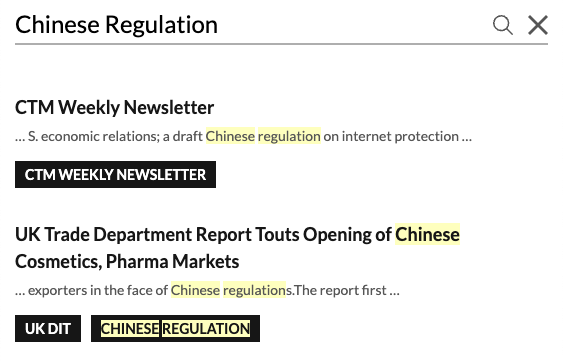On September 18, China’s Ministry of Commerce (MOFCOM) issued its preliminary countervailing duty ruling on certain monoalkyl ethers of ethylene glycol and propylene glycol/certain glycol ethers (乙二醇和丙二醇的单烷基醚) originating in the United States. The countervailing duties will be 16.8 percent. The decision is open for comments for 10 days.
The ruling will apply to glycol ether imports under the tariff codes 29094400 and 29094990. The products can be used as solvent agents, dispersants and dilutants, fuel antifreeze, or extractants. As an important material for organic synthesis, they are widely used in electronic chemicals, coating materials, pharmaceuticals and pesticides, and other chemical products.
In the preliminary ruling, Announcement No. 26 of 2021 (link in Chinese), MOFCOM first considered subsidies for the upstream raw materials at both the federal and state level in the United States, and then evaluated the direct subsidies applied to the investigated products.
With regard to the subsidies for the upstream raw materials, at the federal level, MOFCOM looked into nine types of tax policies related to the upstream oil and gas industries, including the expensing of intangible drilling costs, percentage depletion for oil and natural gas wells, two year amortization period for geological & geophysical expenditures, percentage depletion for hard mineral fossil fuels, deductions for tertiary injectant expenses, exceptions to passive loss limitation for working interests in oil and natural gas properties, enhanced oil recovery credits, corporate income tax exemptions for fossil fuel publicly traded partnerships, and accelerated depreciation of natural gas transmission and distribution pipelines.
In addition, various U.S. states also provided fiscal and tax benefits that subsidized the gas and oil industries, according to the ruling. The ruling identified eight programs in Alaska, one in California, four in Colorado, 17 in Louisiana, two in North Dakota, ten in Oklahoma, one in Pennsylvania, two in Texas, one in West Virginia, and two in Wyoming.
The petition claimed that the distortion in the upstream industries had an impact on the price of glycol ethers through intermediate products (ethylene/propylene and ethylene oxide/propylene oxide). In addition, the petition claimed that some manufacturers of the glycol ethers also produce intermediate products, which means they also directly benefitted from subsidies in the upstream sectors.
In calculating the benefits of the upstream subsidies, the agency determined to make the decision based on “facts available” because neither the U.S. government or the surveyed companies provided the needed information. MOFCOM also determined that the upstream raw material suppliers of oil and gas benefited from U.S. government subsidies; such benefit has resulted in lower costs of the downstream products and therefore competitive advantages of the investigated products; and the ad valorem subsidy rate is 15.87 percent.
The ruling also identified five direct subsidy programs that have benefited the Dow Chemical Company, including R&D subsidies from the Department of Energy, real estate tax cut for large investment companies in Texas under the Texas Economic Development Act, grant from the Texas Enterprise Fund, grant from Center of Energy Excellence Program in Michigan, and industrial tax exemption program in Louisiana. These programs yielded an ad valorem subsidy rate of 0.017 percent, 0.075 percent, 0.087 percent, 0.005 percent and 0.021 percent, respectively. In addition, the ruling determined that the same five subsidy programs, as well as four other subsidy programs, benefited suppliers of Dow Chemical Company.
There are an additional 32 programs that the agency decided not to rule on in the preliminary ruling and will conduct further investigations later.
Altogether, the ruling determined a 16.8 percent ad valorem subsidy rate for the Dow Chemical Company and all other companies.
In addition, the ruling determined that the domestic market of related glycol ethers has suffered material injury and there is a causal relationship between the subsidies and material injury.

